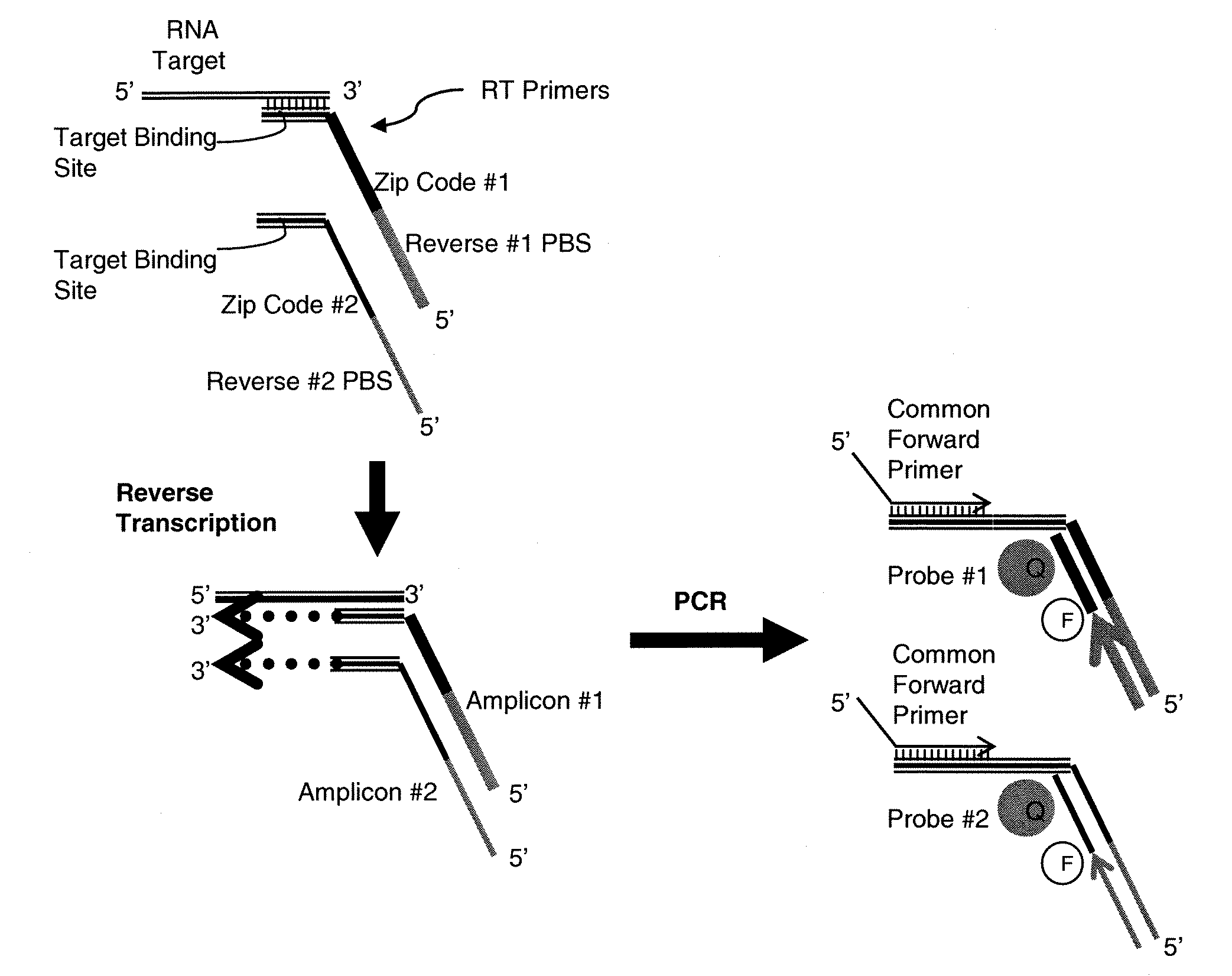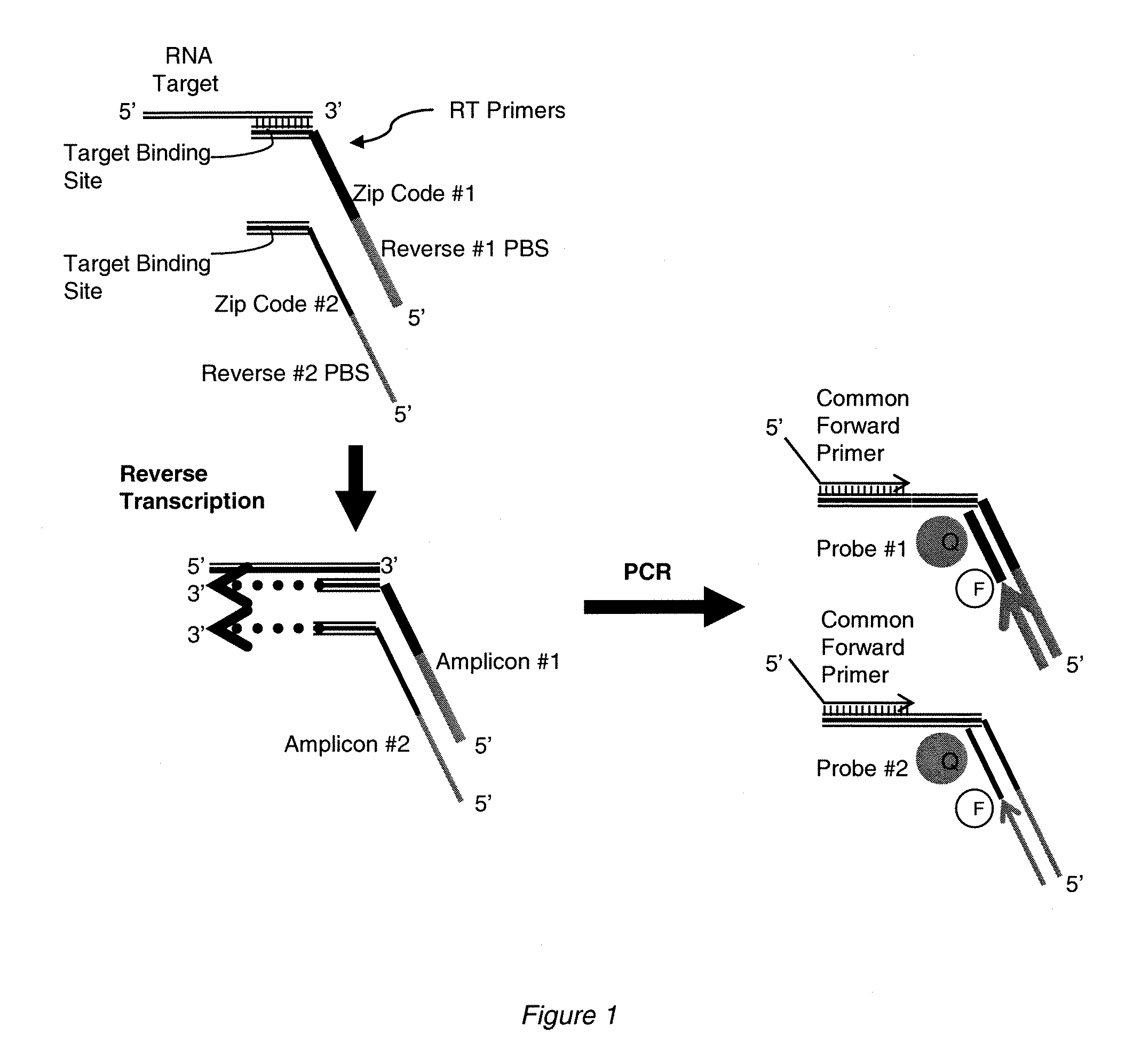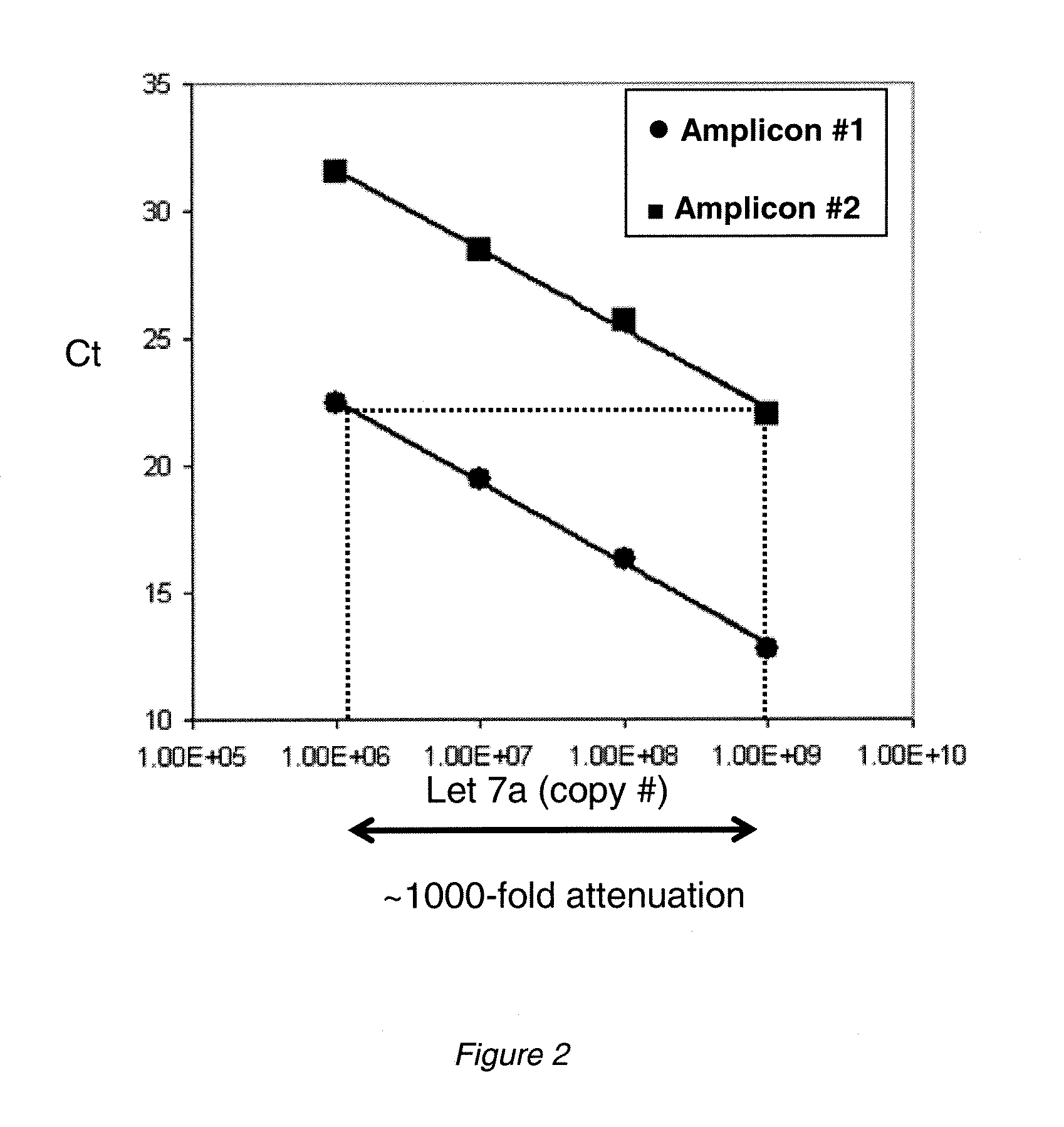Nucleic acid quantitation methods
- Summary
- Abstract
- Description
- Claims
- Application Information
AI Technical Summary
Benefits of technology
Problems solved by technology
Method used
Image
Examples
example 1
Multiplex Quantification of a Target Nucleic Acid Sequence
[0154]To test the concept of independent and attenuated quantification of multiple amplicons produced from the same target sequence, the following model system was designed (see schematic in FIG. 1). A synthetic RNA corresponding to let 7a miRNA was synthesized (Integrated DNA Technologies). Reverse transcription (RT) primers were designed comprising three discrete segments: i) a sequence complementary to the 3′ region of the miRNA; ii) a segment encoding a sequence non-complementary to the target that was unique to each RT primer (the “zip code”); and iii) a segment encoding a sequence non-complementary to the target but complementary to a reverse PCR primer that was unique to each RT primer. A forward primer complementary to the 5′ region of the target miRNA was also designed. Amplification thus produces two amplicons from the single target that can be distinguished by the use of unique reverse primer binding sites and / or z...
example 2
Dynamic Range Expansion Using Different Primer Concentrations in RT Reaction
[0155]One strategy for reducing the signal from abundant targets after amplification is to dilute the RT primer that seeds cDNA synthesis. As a result, less cDNA is made, and thus less of the starting amplicon is passed into PCR. The net effect of this change at the level of PCR is an increase in the offset of the PCR standard curve, without a change in the slope of the curve. To demonstrate the utility of this approach, multiplex RT reactions were prepared using two different RT primers directed against a single let 7a target as described in Example 1. The RT primer sequences contained an identical target annealing region, a unique probe sequence upstream of the annealing region, and a unique reverse PCR primer sequence upstream of the probe sequence. RT primer sequences are shown in Table 1 below. In the table, let 7a target binding sequences are capitalized without underlining. Unique zip code sequences a...
example 3
Dynamic Range Expansion by the Addition of a Competimer Primer
[0160]An alternative to RT primer dilution, which affects product formation during processing of the RNA into cDNA, is to use unextendable PCR primers. The unextendable PCR primers affect product formation during amplification of the cDNA at the PCR step. In one method to differentially amplify the amplicons, one of the reverse primers is mixed with an excess of a primer of identical sequence that is phosphorylated at the 3′ OH group. Such “blocked” primers, also known as competimers (U.S. Pat. No. 6,057,134) are not a substrate for polymerization by DNA polymerases. As a result, the yield of PCR product is reduced accordingly. Multiplex RT reactions were prepared using two different RT primers directed against a single target as described in Example 1. The RT primer sequences are shown in Table 6 with target, zip code, and primer binding site sequences indicated as in Example 2.
TABLE 6RT PRIMER SEQUENCES FOR EXAMPLE 3RT-...
PUM
| Property | Measurement | Unit |
|---|---|---|
| Temperature | aaaaa | aaaaa |
| Temperature | aaaaa | aaaaa |
| Temperature | aaaaa | aaaaa |
Abstract
Description
Claims
Application Information
 Login to View More
Login to View More - R&D
- Intellectual Property
- Life Sciences
- Materials
- Tech Scout
- Unparalleled Data Quality
- Higher Quality Content
- 60% Fewer Hallucinations
Browse by: Latest US Patents, China's latest patents, Technical Efficacy Thesaurus, Application Domain, Technology Topic, Popular Technical Reports.
© 2025 PatSnap. All rights reserved.Legal|Privacy policy|Modern Slavery Act Transparency Statement|Sitemap|About US| Contact US: help@patsnap.com



